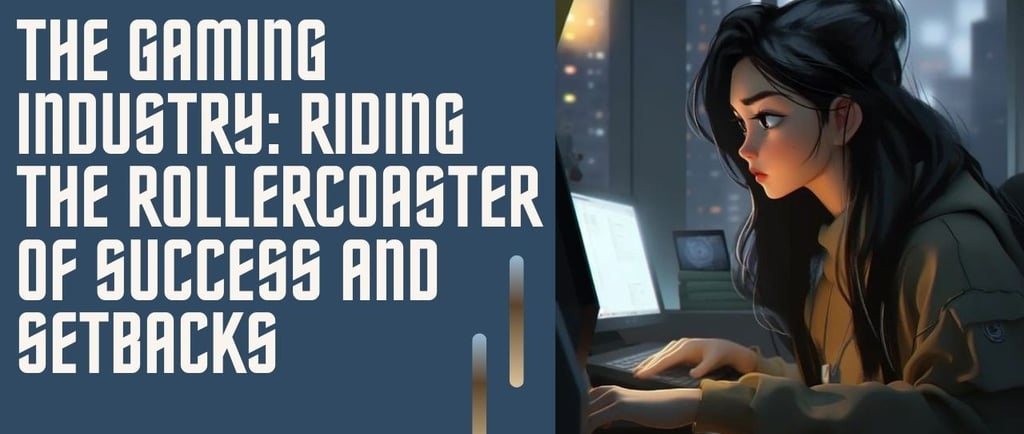The Gaming Industry: Riding the Rollercoaster of Success and Setbacks
GAMING


Hey everyone, let's chat about the wild journey the gaming industry has been on lately.
We've seen some crazy highs and unexpected lows, so let's break it down.
Back in the early 2000s, gaming got super popular. A few big reasons made it happen:
The Rise:
In the early 21st century, gaming took off like a rocket! It was like a big boom happened, and suddenly everyone was playing. Let me break down why:
1. Tech Boost: Things got super fancy with technology. Games went from looking like simple cartoons to feeling almost real! It was like magic happened in the world of computers,
2. Everyone's In: Gaming used to be a bit niche, you know? But then, everyone from your little sister to your grandma started getting in on the action. It was like a big party, and everyone was invited.
3. Cool Culture: Gaming became more than just a hobby—it became a whole lifestyle. People were watching tournaments like they were sports games and talking about games like they were blockbuster movies. It was like being part of a big, awesome club!
4. Smart Business: Game companies figured out some clever tricks to keep us hooked. They made it easier to buy games online and even added cool stuff you could buy while playing. It was like they knew exactly what we wanted before we even did!
The Fall:
The main reasons why the gaming industry faces a big fall:
1. Graphics Over Gameplay: Some games focus too much on flashy graphics, (it's good) but forgetting that gameplay and storytelling are what truly engage players. It's like a movie with stunning visuals but a lackluster plot—there's nothing to keep you invested.
2. Lack of Clear Roles: Within game development teams, job roles can be unclear, leading to confusion and inefficiency. It's like playing a game without knowing the rules—you're just guessing and hoping for the best.
3. Poor Storytelling: Many games suffer from weak storytelling, relying on clichés and predictable plots. It's like reading a book with the same tired storylines—you already know how it ends before you even start.
4. Poor Quality Control: Games released with numerous bugs and technical issues frustrate players and tarnish a company's reputation. It's like buying a car only to find out it's missing half its parts—you feel cheated and disappointed.
5. Neglecting Player Feedback: Companies that ignore player feedback risk losing touch with their audience. It's like shouting into a void—no one's listening, and you're just wasting your breath.
6. Lack of Originality: No New Ideas: Lots of game companies just copy what works instead of coming up with their own cool stuff. It's like playing the same thing over and over—nothing feels fresh or exciting anymore.
Solution:
To tackle the challenges in the gaming industry, here are some solutions:
1. Focus on Gameplay and Storytelling: Prioritize engaging gameplay and compelling storytelling to captivate players.
2. Define Job Roles Clearly: Clarify responsibilities within development teams to improve communication and efficiency.
3. Ensure Quality Control: Invest in rigorous testing to prevent bugs and technical issues in game releases.
4. Listen to Player Feedback: Actively seek and incorporate player input to better understand audience preferences.
5. Encourage Innovation: Foster a creative environment to inspire original game concepts and designs.
By embracing these solutions, game companies can navigate the twists and turns of the industry with confidence. With a renewed focus on creativity, quality, and player engagement, the future of gaming shines brighter than ever before. Let's embark on this journey together, where innovation knows no bounds, and every player's experience is truly extraordinary. Together, we can redefine what it means to play and create games that inspire, captivate, and delight audiences around the world. The adventure awaits let's make it legendary.
Best Regards,
Nimra Sardar
